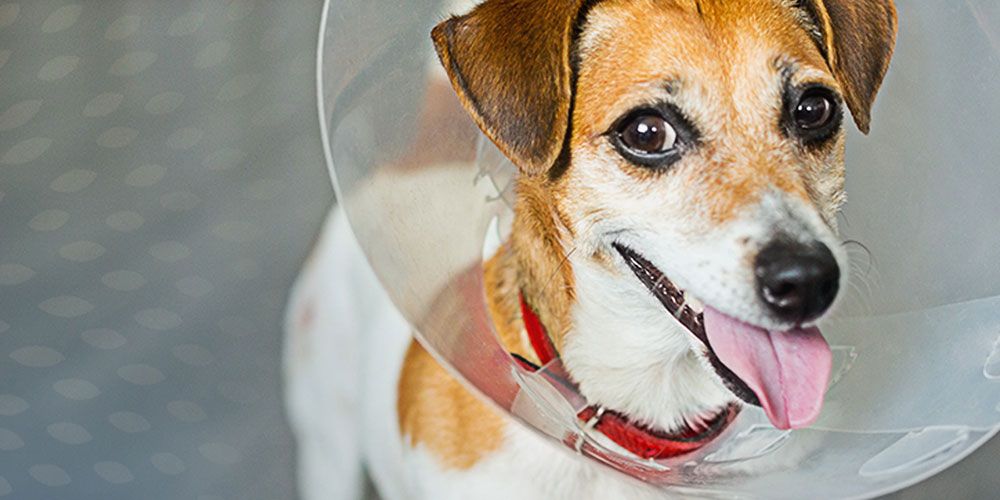Just about every pet owner agrees that caring for animals is a huge responsibility. When you bring home a dog, for example, you’re committing to a whole host of responsibilities. You need to set aside time for walking, keep a supply of nutritious food, maintain a safe environment, and more.
Veterinary care is also a huge component of keeping your furry friend healthy. Vets treat existing issues, but they also work to stop problems before they start. Spaying and neutering, surgical procedures that prevent animals from reproducing, are two of the most common preventive measures small animal veterinarians use.
Though you probably know sterilizing pets is common, you might wonder if it’s necessary. Why spay and neuter, anyway? It turns out there are perks for you, your pet, and your community.
Why spay and neuter? 5 Benefits pet owners should keep in mind
>Most veterinarians recommend taking your pet in for the appropriate reproductive procedure at a young age. Here’s an overview of why it’s so important.
1. There are medical benefits for your pet
Believe it or not, getting your pet spayed or neutered offers some health benefits. For females, the risk of some medical issues is nearly eliminated. This is due to the nature of the procedure, which involves removing the ovaries and uterus.
“Spayed females will not develop ovarian or uterine cancers later in life.
“Spayed females will not develop ovarian or uterine cancers later in life,” says Dr. Megan Teiber, small animal veterinarian and veterinary consultant for Tuft + Paw. She adds spayed females won’t develop a type of uterine infection called pyometra. They’re also less likely to develop mammary cancer if spayed before their first heat cycle.
The inability to reproduce itself even provides some health benefits for females. “The complications associated with pregnancy and delivery are also eliminated in spayed females,” offers Dr. Jennifer Coates, who serves on Pet Life Today’s board of advisors.
Have a male animal companion? There may be health perks for your furry friend as well.
“Neutered male dogs are much less likely to experience disease of the prostate gland,” says Dr. Andrew DeStefano of Dunedin Animal Medical Center.
2. Spayed females won’t go into heat
Any pet owner who’s had to deal with a female animal in search of a mate will tell you it’s no fun. Cats, in particular, can be quite vocal and engage in marking. The solution is simple. “Spaying a female pet will prevent her from having heat cycles,” Dr. Teiber says.
3. Spaying and neutering may address behavioral issues
If you’re new to owning a pet, you might not realize how much an animal’s sex hormones influence the way it acts. Spaying and neutering can help reduce, or even eliminate, certain unwanted tendencies.
“Spayed and neutered pets tend to have lower incidences of unwanted behaviors like urinary marking, mounting, intermale aggression, roaming, vocalizing due to hormonal changes, etc.,” Dr. Coates explains.
“Keep realistic expectations about the behavioral effects of spaying and neutering.”
Just don’t expect the surgery to correct major problems. “Keep realistic expectations about the behavioral effects of spaying and neutering,” Dr. DeStefano warns, “Especially if you are doing it after one or two years of age.” Some behaviors may have become habit at this point.
4. Spaying and neutering prevent unwanted litters
The most obvious reason to get a pet spayed or neutered is to keep yourself from ending up with an unexpected litter. Dr. Teiber points out that, in addition to being inconvenient for pet owners, unplanned pet pregnancies result in overpopulation. In fact, certain areas have implemented trap-neuter-release programs to better manage stray animal populations. Some evidence suggests it may be an effective strategy.
This applies to all companion animals, too. “Any mammal larger than a hamster can potentially be spayed or neutered,” Dr. DeStefano says. A few common examples are ferrets and rabbits. He also notes that while it’s technically possible to perform these procedures on a hamster, it’s not practical.
5. Sterilizing pets can help keep the community safe
Unsterilized pets are more likely to roam and contribute to overpopulation. All those wandering animals may damage property, injure or kill livestock, or attack humans. There’s even the risk that stray animals will transmit zoonotic diseases like rabies to humans they encounter. Spaying and neutering can help alleviate these issues.
What to know before you go
It’s generally recommended that pet owners spay or neuter their animal pretty early. The American Society for the Prevention of Cruelty to Animals (ASPCA) says puppies typically receive the appropriate surgery when they’re about six months old, while cats are usually safe to spay or neuter at eight weeks old. Since every animal is different, you’ll want to talk to your veterinarian to determine what’s best for your pet. In some cases, it may be beneficial to wait a little longer.
After the surgery, your pet will likely experience some discomfort. There are steps you can take to make sure the recovery process goes smoothly.
“It is important to restrict exercise for one to two weeks following surgery.”
“It is important to restrict exercise for one to two weeks following surgery,” Dr. Teiber says. She also highly recommends that pets wear cones—called Elizabethan or e-collars—to prevent them from licking. Vets typically prescribe pain medication as well. You may want to inquire about this to ensure you choose a clinic that will ensure your pet is comfortable.
If cost is a concern, don’t immediately discount sterilizing. There are many low-cost spay and neuter clinics out there. It’s also helpful to think about the potential costs or hassles you could avoid later on.
“Keep in mind that, in the long run, spaying and neutering can pay for itself by reducing future veterinary bills and other costs associated with owning a pet capable of reproducing,” Dr. Coates offers.
Furthermore, reproductive surgery is just one of the many purchases you’ll make for your furry friend. “New pets will require a series of vaccinations, preventative medications, and a lot of supplies,” Dr. Teiber reminds. She also suggests considering adoption from a shelter, because they typically spay and neuter animals before finding them a home.
Lastly, it’s important that you’re aware of potential complications. Spaying and neutering might be common procedures, but any type of surgery bears some risk. Examples are infections and complications from anesthesia. Be sure to speak to your vet to discuss any concerns.
Prioritize pet health
You can see why spay and neuter procedures are so important for your animal and the larger community. Plus, spays and neuters are incredibly routine procedures that are quite affordable. Taking your pet in for one of these reproductive surgeries is one of the best ways you can ensure long-term health.
Wondering what else you can do to prioritize your pet’s wellness? Getting your companion animal vaccinated goes a long way toward preventing illness. Learn more about the proper immunizations by reviewing our infographic, “Standard Pet Vaccinations: What Does Your Animal Accomplice Need & Why?”

